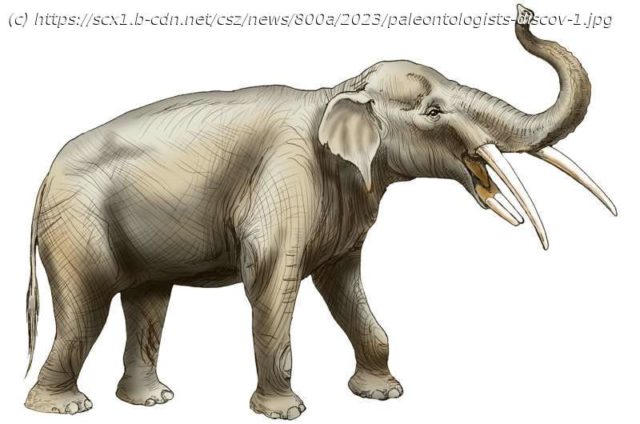About five and a half million years ago, several gomphotheres—extinct relatives of elephants—died in or near a river in North Florida. Although their deaths likely occurred hundreds of years apart, their bodies were all deposited in a single location, entombed alongside other animals that had met with a similar fate.
About five and a half million years ago, several gomphotheres—extinct relatives of elephants—died in or near a river in North Florida. Although their deaths likely occurred hundreds of years apart, their bodies were all deposited in a single location, entombed alongside other animals that had met with a similar fate.
Today, the river no longer exists, but the fossils it left behind have offered paleontologists a panoramic view of life in prehistoric Florida. Early last year, scientists and volunteers began unearthing the gomphotheres at the Montbrook Fossil Dig in what is likely to be a record-breaking discovery.
« This is a once-in-a-lifetime find, » said Jonathan Bloch, curator of vertebrate paleontology at the Florida Museum of Natural History. « It’s the most complete gomphothere skeleton from this time period in Florida and among the best in North America. »
Bloch and his team discovered portions of a gomphothere skeleton early in the spring of 2022. Isolated gomphothere bones have been found at Montbrook in the past, so there was no reason to suspect that this was anything out of the ordinary. But a few days later, a volunteer digging nearby discovered the articulated foot of something very large.
« I started coming upon one after another of toe and ankle bones, » said Dean Warner, a retired chemistry teacher and Montbrook volunteer. « As I continued to dig, what turned out to be the ulna and radius started to be uncovered. We all knew that something special had been found. »
Within a few days, it became clear there was not just one but several complete skeletons, including one adult and at least seven juveniles. The research team will need to fully excavate the specimens before they can accurately determine their size, but Bloch estimates the adult was eight feet tall at the shoulders. With the tusks included, the skull measures over nine feet in length.
According to Rachel Narducci, collection manager of vertebrate paleontology at the Florida Museum, it’s likely the fossils were successively deposited or transported to the area. « Modern elephants travel in herds and can be very protective of their young, but I don’t think this was a situation in which they all died at once, » she said. « It seems like members of one or multiple herds got stuck in this one spot at different times. »
Research teams have been excavating at Montbrook since 2015, when Eddie Hodge contacted Florida Museum researchers about fossils that had been discovered on his property.






